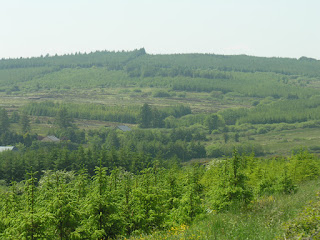Some video of the first Barn Owl chicks of 2012, hatched in Tipperary around 22nd April (Video courtesy of Brian Dillon).
Another clip, below, shows both the adult birds in the nest box just prior to the laying of the eggs (Video courtesy of Brian Dillon).
And the next clip shows the female incubating the eggs. As she departs the nest box momentarily it is possible to see she is ringed.
Video courtesy of Brian Dillon, who monitors Barn Owl sites in south Tipperary and is assisting with this project. He has collected this footage under licence from the National Parks and Wildlife Service.




